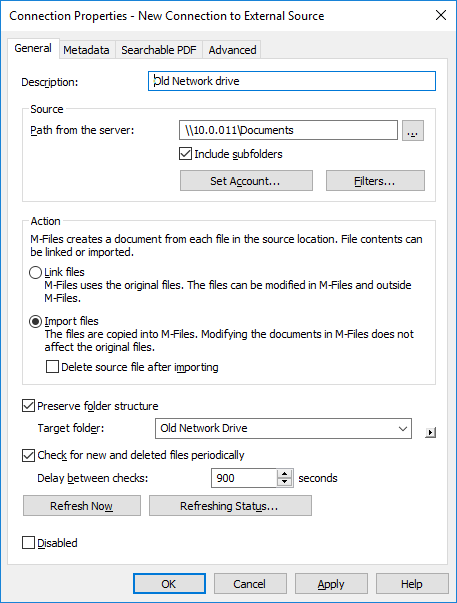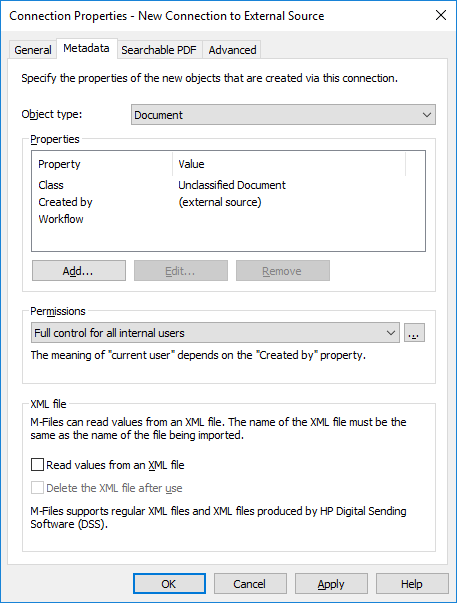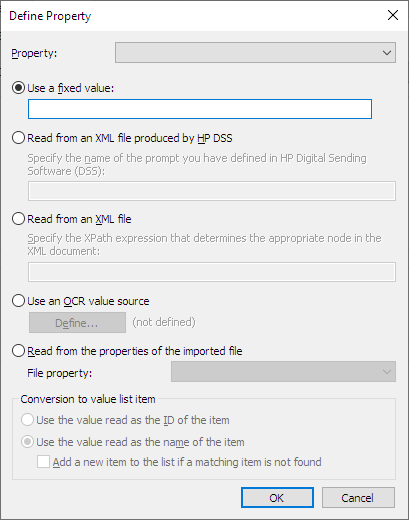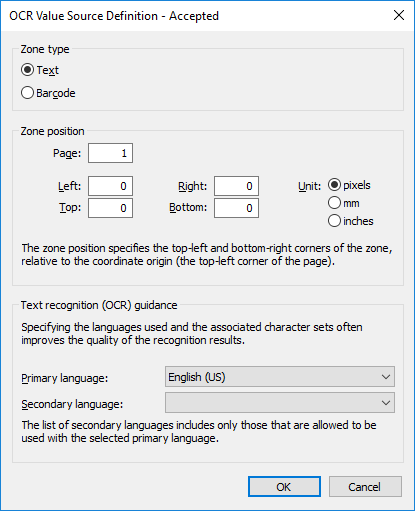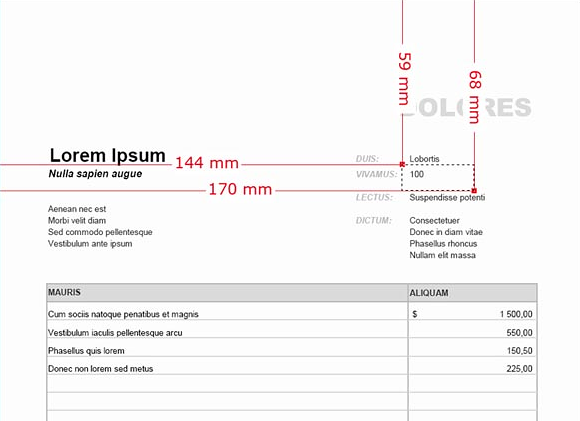Defining an OCR Value Source
You can extract text or barcodes from a scanned document using optical character recognition (OCR) and use them as automatic property values for files imported from an external source, a scanner in this case. The OCR value source is a zone defined on a scanned page. For more information on defining different properties for objects imported from external file sources, see Defining Metadata for an External File Source.
- TIF
- TIFF
- JPG
- JPEG
- BMP
- PNG
The use of an OCR value source is only possible when using an external source.
Do the following steps to define an OCR value source:
- Open M-Files Admin.
- In the left-side tree view, expand a connection to M-Files server.
- Expand Document Vaults.
- Expand a vault.
- Expand Connections to External Sources
- Click File Sources.
- On the File Sources list, double-click the file source that you want to edit.
- Click the Metadata tab.
- Click Add... to define a new property and value to be added automatically for objects created from external files, or select one of the existing properties and click Edit... to edit the existing property.
- Select the option Use an OCR value source and click the Define... button.
-
In the Zone type section, select either:
- Text: Select this option if the OCR zone contains text.or
- Barcode: Select this option if the OCR zone contains a
barcode.Note: For the supported barcode types, see Supported Barcode Types.
- Text: Select this option if the OCR zone contains text.
-
In the Zone position section, define a zone from which to extract a value
for the selected property. The characters may include any letters, numbers or punctuation marks. For
example, an invoice number shown on a page can be added as the Invoice number property value
for the scanned document.
If you are capturing a barcode and there is only one barcode to recognize on the page, you can specify the whole page as the zone. If there are several barcodes, restrict the zone in a such a way that it contains the desired barcode only. With QR codes, you should specify a zone larger than the actual barcode. If the specified zone has several barcodes, all of them are considered to be a property value.
- In the Page field, enter the page number of the scanned document that you want to use as the OCR value source.
- Using the Unit options, select the appropriate unit for defining the zone position.
- In the Left field, enter the left corner position of the OCR zone. The left corner of the scanned document is considered "0".
- In the Right field, enter the right corner position of the OCR zone.
- In the Top field, enter the top corner position of the OCR zone. The top corner of the scanned document is considered "0".
- In the Bottom field, enter the bottom corner position of the OCR zone.
-
With the Primary language and Secondary language
drop-down menus, select the primary and secondary language of the scanned documents to improve the
quality of the recognition results. The list of secondary languages only contains languages that are
allowed to be used with the selected primary language.
Although the OCR automatically recognizes all Western languages and Cyrillic character sets, specifying a language selection often improves the quality of the text recognition results. In ambiguous cases, a problematic recognition result may be resolved by a language-specific factor, such as recognition of the letter 'Ä' in Finnish. The list of secondary languages only includes languages that are allowed to be used together with the selected primary language.
- Click OK to close the OCR Value Source Definition dialog.
-
Back in the Define Property dialog, select either:
- Use the value read as the ID of the item: Select this option if you
want to use the captured value as an identifier of the value list item with a separately defined
name.or
- Use the value read as the name of the item: Select this option if you want to use the captured value as the name of the value list item. You can check the Add a new item to the list if a matching item is not found check box if you want to add a new value list item whenever a new value is captured.
- Use the value read as the ID of the item: Select this option if you
want to use the captured value as an identifier of the value list item with a separately defined
name.
- Click OK to close the Define Property dialog.
To make sure that the specified zone is correctly positioned, in most cases the document to be scanned must be placed onto the scanner glass by hand.
In some cases, the OCR can give an incorrect recognition result of the text. For example, depending on the font type or size, the number 1 can be interpreted as the letter I. To make sure that the characters are added correctly to metadata, you can check the property values with event handlers and VBScript. You can then use VBScript to check, for example, that all added characters are numbers. For more information, see Event Handlers.
Supported Barcode Types
The M-Files OCR module supports the following barcode types:
- QR Code
- Data Matrix
- Aztec Code
- EAN-13
- EAN-8
- EAN-5
- EAN-2
- MSI Plessley
- MSI Pharma
- UPC-A
- UPC-E
- Codabar
- Interleaved 2 of 5
- Discrete 2 of 5
- Code 39
- Code 39 Extended
- Code 39 HIBC
- Code 93
- Code 128
- PDF 417
- Postnet
- Postnet 32
- Postnet 52
- Postnet 62
- Patchcode
- UCC-128
- UPCE Extended
- IATA 2 of 5
- Datalogic 2 of 5
- Reverse 2 of 5
- Code 39 (out-of-spec)
- Code 128 (out-of-spec)
- Codabar (out-of-spec)
